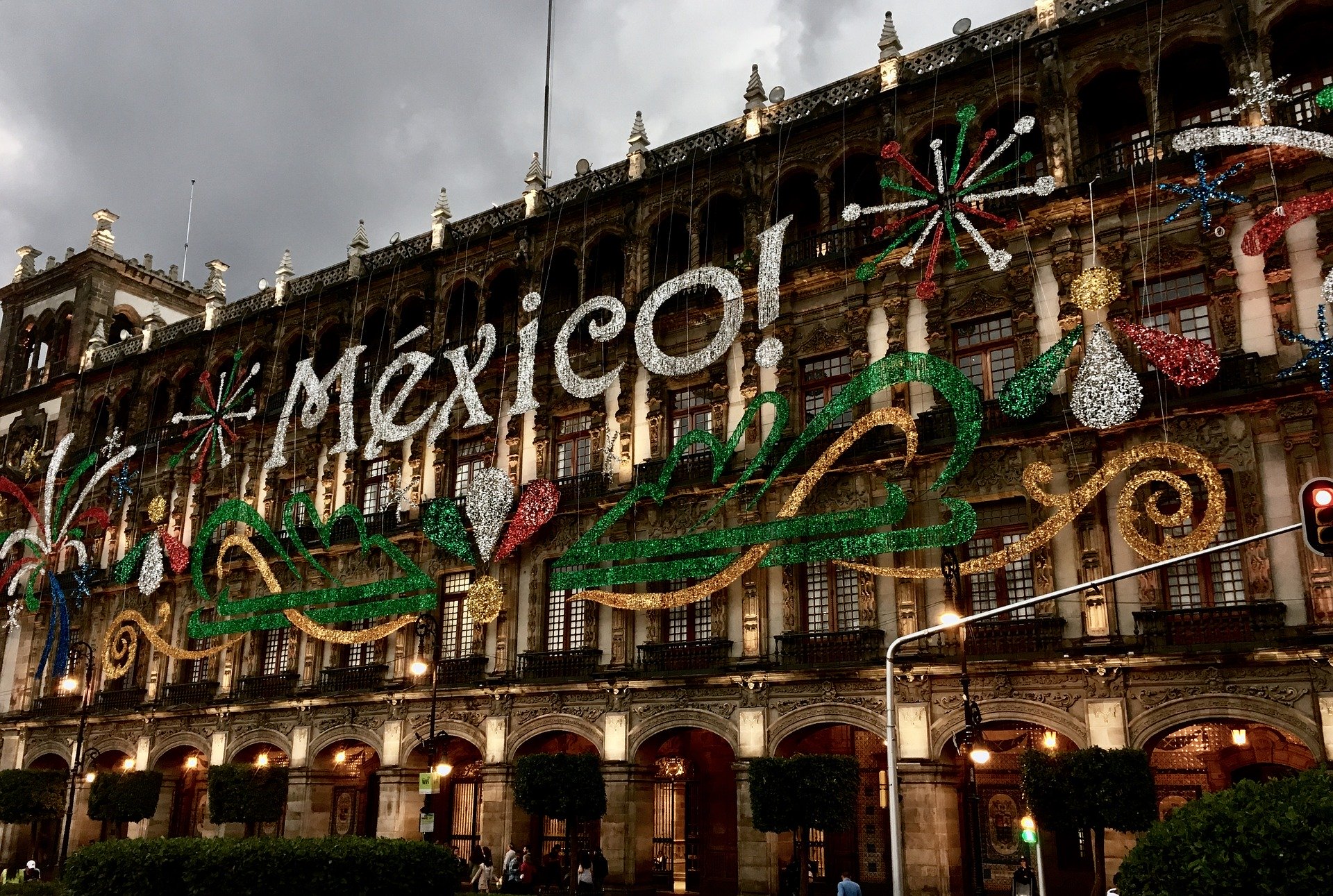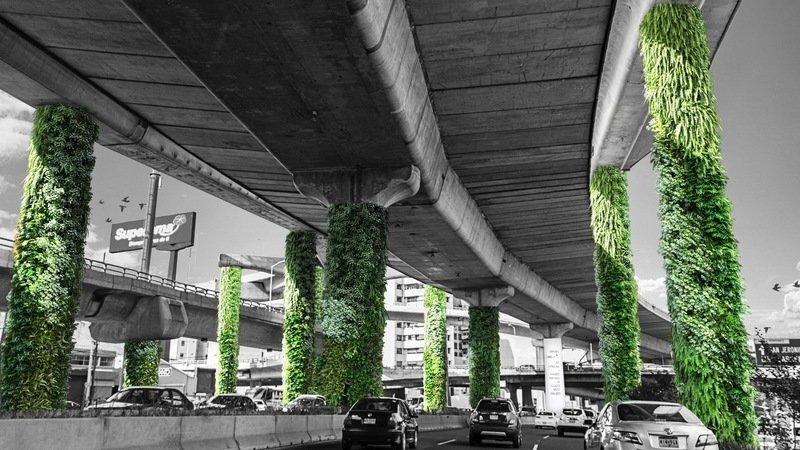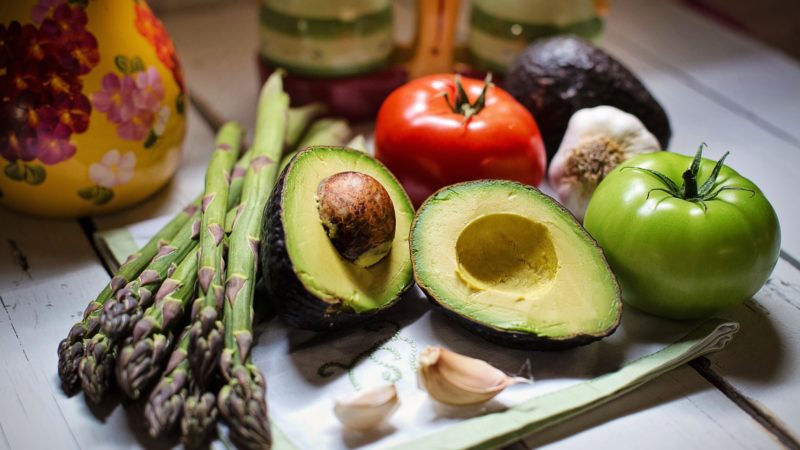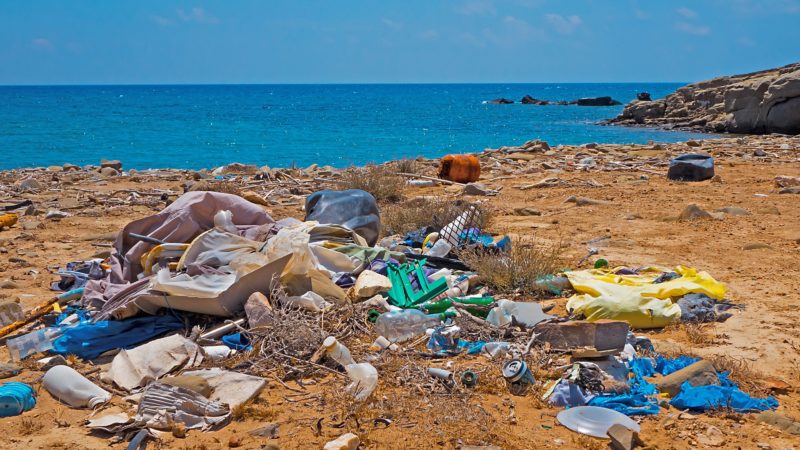Mexico City’s pollution solution: Vía Verde Vertical Gardens3 min read

There is a ring road that crosses several areas of the Federal District of Mexico City for about 60 kilometers. Its name is “El periferico de Ciudad de Mexico”. A fast-moving road of vehicles made of concrete and monotonous gray pylons positioned at regular spatial intervals that support a highway overpass.
But something new is happening in one of the most polluted cities in the world where six out of ten citizens suffer from respiratory problems and where there are only 5.3 square meters of greenery per inhabitant compared to the nine that the World Health Organization (WHO) considers the minimum to achieve an acceptable quality of life.
Architecture and sustainability
Turning Mexico City’s grey to green
The Mexican capital has covered a thousand pylons of highways with shrubs, completing them with an irrigation system that recycles rainwater through an integrated and monitored system, as well as remote-controlled via GSM. The plant species used are high strength, low water consumption, and suitable for the harsh environmental conditions of those places.

The idea for “Vía Verde” emerged in 2016 with a Change.org petition to gauge public support.
The actor Luis Gerardo Méndez and the architect Fernando Ortiz Monasterio of the Studio “Verde vertical” created it together with an interdisciplinary Mexican laboratory that specialized in the design, installation, and maintenance of vertical gardens. They convince the administration of the metropolis, after having collected the support of 80,000 people thanks to the platform specializing in online petitions.
Vía Verde is 100% sustainable project
In addition to the beneficial effects listed so far, there is another very important one. In fact, “Vía Verde” uses recycled plastic. Fernando Ortiz Monasterio and his team have cleverly developed a technological system that allows plants to grow, rather than in the earth, inside a specific felt, composed of recycled plastic bottles. This material allows the development of plant species because it has the same density as the soil.
In addition to sustainability, an enabling factor for Fernando Ortiz Monasterio’s program was the idea of being able to reduce citizens’ stress.
While these plants are able to absorb a significant amount of carbon and particles from the capital’s polluted atmosphere, their purpose is mostly aesthetic. Ortiz Monasterio himself has admitted that 1,000 vertical gardens can only put a mere dent in the megalopolis’s carbon output. The classic “a drop in the bucket”.
Moreover, there is no shortage of (mild) controversies. As a matter of fact, a small group of activists argues that the government’s support indicates a cynical greenwashing and the willingness to double-down on car culture in a city that is already choked with traffic and smog. “Vía Verde” would be simply a more pleasant cityscape for the drivers passing through there every day.
Source: Change.org
Featured image by admknowdns from Pixabay



